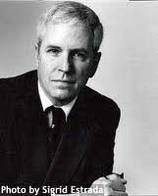| |
Rebellion Road
BY:
Joe Ryan
| |
 “The book opens well: we are right there with Lincoln, in his head, experiencing the wonderful details of his experience in a way that only can come from a confident, knowledgeable historian with the nerve of a fiction writer. And you do this over and over again in the book—and you don’t need me to list those scenes, because they are uniformly good and entertaining and well written.” (Michael Strong, Regal Literary) “The book opens well: we are right there with Lincoln, in his head, experiencing the wonderful details of his experience in a way that only can come from a confident, knowledgeable historian with the nerve of a fiction writer. And you do this over and over again in the book—and you don’t need me to list those scenes, because they are uniformly good and entertaining and well written.” (Michael Strong, Regal Literary)
|
| |
 “There is some really splendid writing to be found here. It is a superb piece of work. I will carry images evoked by the narrative in my memory for a long time to come. This is a far more complex and demanding book (because of the brilliant detail) than, say, The Killer Angels. It gives us a (if not the) pivotal state of war in the East.” (James O’Shea Wade, Vice President, David McKay Co.), editor and publisher of The Killer Angels, in 1974 “There is some really splendid writing to be found here. It is a superb piece of work. I will carry images evoked by the narrative in my memory for a long time to come. This is a far more complex and demanding book (because of the brilliant detail) than, say, The Killer Angels. It gives us a (if not the) pivotal state of war in the East.” (James O’Shea Wade, Vice President, David McKay Co.), editor and publisher of The Killer Angels, in 1974
|
| |
 |
| |
MAPS AND ILLUSTRATIONS
CHARLESTON HARBOR 52
GENERAL LEE'S OATH OF ALLEGIANCE 67
GENERAL LEE'S RESIGNATION LETTER 68
THE SHENANDOAH VALLEY 143
McCLELLAN'S FRONT ON THE CHICKAHOMINY 151
GENERAL LEE'S FLANK ATTACK 175
GAINES MILL 186
THE SITUATION IN KENTUCKY 231
NORTHERN VIRGINIA 250
WESTERN MARYLAND 298
ANTIETAM 385
GENERAL NEWS FROM WASHINGTON 414
|
The Constitution of the United States expressely states that it is the supreme law of the land.
The President-Elect of the United States swears to "preserve, protect and defend the Constitution."
In 1861, the Attorney General advised the President that in cases where he perceives a congressional act conflicts with the Constitution the Executive Branch may disregard it.
"My gosh, this is elementary law. I think almost anybody would have to agree, except somebody who just does not know elementary law or does not know constitutional law at all." (Senator Orrin Hatch of Utah, speaking on the floor of the United States Senate on February 3, 2005)
"I read the Constitution to see how closely I think we got to what the - - what the framers wrote." (Chief Justice John Roberts to PBS moderator Brian Lamb on August 5, 2006)
"Of course, the answer to the slavery question was already embedded within our constitution that had at its very core the idea of equal citizenship under law; a constitution that promised its people liberty, and justice, and a union that could and should be perfected over time." (Presidential candidate Barack Obama speaking on May 18, 2008)
"The war was the result of the people's displeasure with the covenants of the Constitution as the framers wrote it, which they resolved through their force of arms on the battlefield." (General Lee after the war) |
| |
| |
CONTENTS
Part One
WASHINGTON
Part Two
RICHMOND
Part Three
SHARPSBURG |
| |
| |
Part One
WASHINGTON |
| |
| |
Early on a gray February morning, in 1861, Abraham Lincoln awoke in a downtown Springfield hotel room and awkwardly raised himself into a sitting position. Pushing aside his blanket, he swung his long legs over the edge of the bed and planted his feet on the floor. Through the narrow window in the wall opposite his bed he saw, in the dawn of the leaden sky, the promise of a terrible storm ahead. He stared out the window for a long moment as the memories of half a life time swarmed his brain: He had come to Springfield from Salem when he was twenty-seven, penniless, single, and ambitious; now, twenty-five years later, he was a one-time congressman, a popular trial lawyer, married to a Southern belle, and going to Washington to be inaugurated as the sixteenth president of the United States. Feeling his body tremble in the cold air of the hotel room, Lincoln clasped his arms against his chest and rocked back and forth, his mind frozen suddenly in the fear that happiness was about to be stricken from his life.
Rain was falling hard on Springfield when the President-Elect left the Chenery House. He was dressed in a black broadcloth suit, too tight in the armpits and too short in the cuffs. His stovepipe hat was tilted back on his head, exposing a shock of coarse, coal-black hair. The faint beginnings of a beard darkened his jaw and chin, softening the harsh angles of his gaunt cheeks, his scraggly neck and prominent Adam's apple. Holding the grip of a leather satchel in one of his brown weathered hands, he stopped for a moment at the hotel's entrance door and looked over the miry street.
It was deserted except for an ancient Negro in a shiny top hat perched on the driver's seat of the hansom cab waiting at the curb, his creased face gleaming in the rain like black metal. A scrawny horse stood in the traces with his head cast down. With a wave at the man, the President-Elect crossed the plank porch in a loose-limbed shambling fashion and stepped into the carriage.
Git on, old hoss, we gwine to git Mr. Linkum to the station," the beaming black coachman said, flicking his long whip over the back of the horse like a trout fisherman his line over the surface of a mountain stream.
As the horse plodded clumsily through the mud, the driver prodding him with the whip from time to time, Abraham Lincoln looked absently one way and then another; glimpsing down one of the side streets his frame house sitting on a slight rise behind a picket fence, and, coming round the State House Square, the brick building at the corner with the stenciling of Lincoln & Heardon across the upper story windows. The sight triggered a flood of memories as he closed his eyes and leaned back against the seat. |
| |

|
|
About the author:
Joe Ryan is a Los Angeles trial lawyer who has traveled the route of the Army of Northern Virginia, from Richmond to Gettysburg, several times. |
|
|